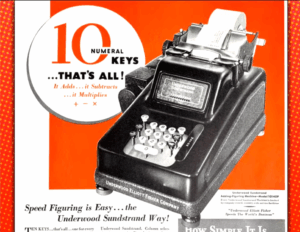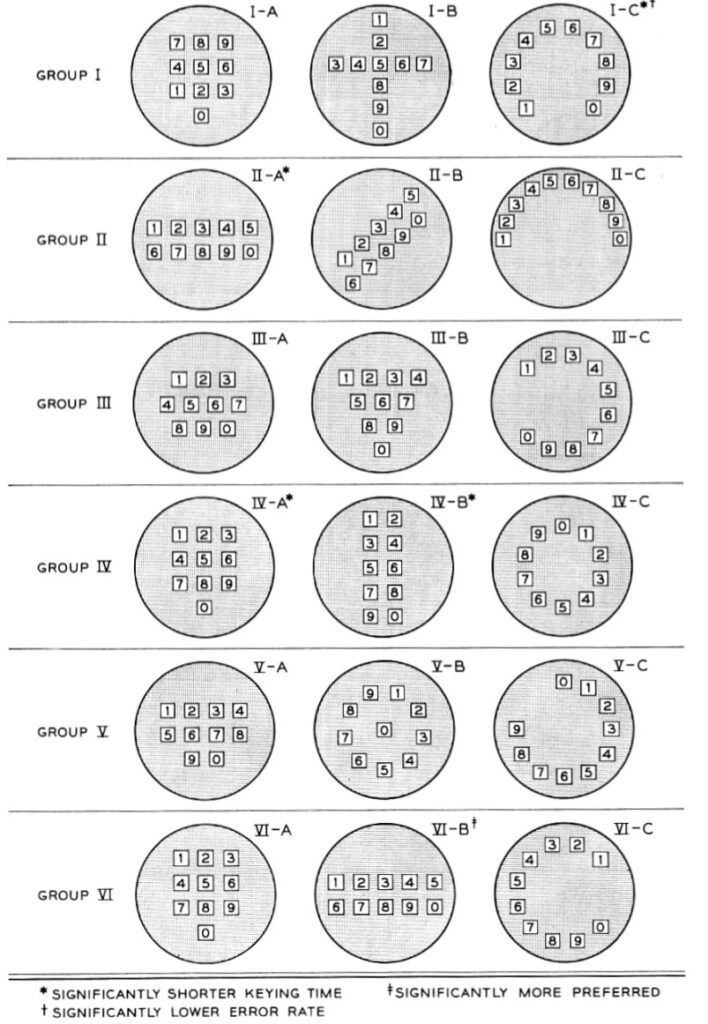History of the Keyboard
If keyboards didn’t exist, the pace and nature of modern society would be dramatically different.
A World Without Keyboards
Without keyboards, we’d still be writing everything by hand — letters, reports, novels, legal documents, scientific papers, school assignments, emails, even code.
Life would be slower, more manual, and more error-prone. Offices would resemble 19th-century scriptoria, filled with clerks transcribing everything by pen. Bureaucracy would swell. There would be delays. Communication, creativity, and computation would be drastically limited.
Even voice-to-text tools wouldn’t have emerged as they rely on our ability to correct, format, and manipulate text — functions we perform with a keyboard.
Programming languages? Near impossible to write or debug efficiently.
Internet search? Awkward at best.
Social media? Couldn’t exist.
The absence of keyboards would mean a bottleneck in progress. We’d have very few books, few ideas shared quickly, less global collaboration, and much less innovation.
It all started with the Typewriter Keyboard
First appearing commercially in the 1870s, the typewriter revolutionized writing:
- Speed and Legibility: The typewriter let people produce clean, consistent, readable documents – and far faster than handwriting.
- Employment Opportunities: It created whole new professions—typists, secretaries, clerical workers—many of which offered new roles for women in the workforce.
- A Standardized Layout: The QWERTY layout became a universal writing system, teaching generations a consistent way to input text. And it was the logical outcome of the keyboard.
- Business Transformed: The typewriter keyboard streamlined correspondence, invoicing, and record-keeping, accelerating commerce and communication.
- More Literary Production: Authors could write faster and edit more easily. Whole genres of journalism and fiction flourished.
The Rise of the Computer Keyboard
The computer keyboard, an evolution of the typewriter, multiplied these gains exponentially:
Digital Efficiency: With computers, keyboards enabled lightning-fast input, editing, storage, and retrieval of text — from business memos to software code.
Programming: Keyboards are essential for software development, powering the digital tools and platforms we now depend on.
Internet and Communication: Email, chat, blogging, social media, and search engines all rely on typed input. Without keyboards, the modern web as we know it wouldn’t function.
Productivity Software: Word processors, spreadsheets, coding environments, and databases—all require keyboard interaction, revolutionizing the way we work and think.
Democratized Creation: From novels to indie video games, keyboards gave everyone the tools to create and share, instantly and globally.
We often overlook the keyboard, but it’s arguably one of the most important inventions of the last 150 years. It didn’t just replace the pen — it amplified human thought, sped up civilization, and laid the foundation for the Information Age.
Without it, we’d be stuck in a world where ideas moved at the speed of ink drying. With it, we’ve built a world that runs on words typed faster than we can think.
But why are the number pads on phones and computers laid out differently?
If you’ve ever looked closely at the number pad on your mobile phone and compared it to the numeric keypad on a computer keyboard or calculator, you may have noticed something odd: the order of the numbers is reversed.
On a phone keypad (including mobile phones), the layout looks like this:
1 2 3
4 5 6
7 8 9
* 0 #
But on a standard computer keyboard’s number pad—or on most calculators—you’ll find this arrangement:
7 8 9
4 5 6
1 2 3
0
The reason for the difference lies in their distinct histories.
The numeric keypad you see on today’s computer keyboards stretch all the way back to 1914, when David Sundstrand launched an adding machine which had just ten keys.
Sundstrand didn’t invent the adding machine. That had started back in 1884. But he simplified it beyond measure, reducing the number of keys by a factor of 10. The design became known as a “ten-key”.
Yet he made one fatal mistake – one that nobody on the planet seems to care about.
Sundstrand chose an illogical layout. The numbers descended from the top, starting with 7 at the top left, and 3 at bottom right. No one thinks like that. We simply got used to it.

Sundstrand advertisement
Yet it’s hard to imagine the impact of Sundstrand’s machine. Until that moment, comptometers, as they were known, were bulky objects. Many were so large they had to be moved around on wheels.
They were also complicated to use, having 72 – 110 keys.
No wonder people loved the 10-key Sundstrand.
Enter the computer era
With the arrival of silicon chips in the ?? 1970s, companies like IBM started to make computers.
Initially, computers took their design from the typewriter, with a row of numbers placed tidily – but inefficiently – on the top row of the keyboard.
And it wasn’t until 1964 that a computer included a number pad.
Sperry launched their Univac Uniscope. Neither a vacuum cleaner nor a telescope, this was the first electronic machine to sport a number pad.

Univac Uniscope. The first electronic machine with a number pad.
Following the design of the comptometers, it put 7-8-9 on the first line of its number pad.
And thereafter all other computer companies followed the Univac’s lead.
And so we’ve been stuck with this layout since 1914. Maybe it’s time for a change to something more ergonomic?
The Uniscope wasn’t a computer as we know it – but rather a terminal – a machine that let you send a request to a distant computer. After a while – which could be minutes or hours, the computer would send you back the information by printing it out on computer paper.
The Univac wasn’t the first terminal, nor even the first to have a screen. That prize went to the Datapoint 3300, introduced in 1969.
It’s hard to imagine, but until then, you couldn’t see what you’d typed until you peered at the sheet of paper you were typing out.
The Dstapoint terminals had a cathode ray tube, like a television set of its time, with a bulbous rear end. Imagine if you sat at your desk with a keyboard – but you couldn’t see what you were typing – that was what computer was like in 1963, prior to the Datapoint’s launch. Nevertheless, since we’re talking keyboards, the prize goes to the Univac.
One of the earliest dedicated computer keyboards was introduced in the Datapoint 3300 in 1969.
Unlike previous devices, which repurposed typewriters and teletype machines, the Datapoint 3300 had a layout specifically designed for computer use. This machine set the stage for future keyboards, leading to the development of the terminal keyboard as a standard interface for computers.
And the computer keyboard simply inherited this convention.
But why did comptometers use the 7-8-9 layout?
When Bell Labs began exploring keypad layouts in the late 1950s for their “touch-tone” telephones, they contacted the leading calculator manufacturers to find out why they had put low numbers at the bottom and high numbers at the top – rather than the other way around.
No one had an answer. That decision seems to have been arbitrary. No one had done any research about which layout was most convenient for users.
So many myths
But myths still abound to explain why the old comptometers used the 7-8-9 layout.
Some people think because comptometers were used by finance people, the companies designed their machines for quickly adding up, with common numbers at the bottom, and in easier reach. But there’s no evidence for that.
The numeric keypad on a computer keyboard is based on earlier adding machines and mechanical calculators, which long predated digital phones.
These devices were used by professionals—bookkeepers, accountants, and data-entry workers. And the machines all used the same layout, with 7-8-9 at the top.
And why do mobile phones have 1-2-3 on their top line?
Answer: mobile phones developed from ‘touch tone’ phones, which used the 1-2-3 layout.
And if you want to ask, “Why did touch tone phones use that 1-2-3 layout”, we’ll have to go back to 1963.
The layout of telephone keypads was developed in that year by Bell Labs, part of AT&T.
Engineers conducted extensive user testing to determine the optimal configuration for the push-button telephone, which was replacing the rotary dial.

Layout options for the Bell Labs phone research
They found that people were most comfortable – and productive – with numbers beginning at the top left and descending downward, in rows of three.
That might not seem surprising to any of us today. After all, we read from one to ten (not ten down to one). And we read from top left to bottom right.
This layout— putting 1-2-3 on the top line — was unfamiliar at the time. But it came out top among the general public who were tested for speed and accuracy when using different phone layouts.
Bell carried out user testing
Bell Labs didn’t just invent the layout—they tested multiple alternatives. Layouts such as circular, diagonal, and even calculator-style configurations were all trialed with ordinary people. The now-standard telephone layout performed best in terms of speed, accuracy, and user satisfaction—especially among those unfamiliar with adding machines.
And when the first computer keyboard arrived,
4. Standardization and Inertia
Once both layouts became widely adopted in their respective domains, they were difficult to change. Telephones and calculators became embedded in daily life, and people learned to use both. Since the devices served very different purposes, no pressure emerged to unify the layouts.
5. Technological Independence
The mobile phone and computer keyboard evolved independently for decades. Only in recent years—particularly with smartphones and on-screen keyboards—have we started using both on the same device. But even now, they retain their traditional layouts to preserve user familiarity and minimize confusion.
Conclusion
The reversed layouts of phone and computer number pads are not a design mistake — they’re outcomes shaped by history, testing, and human behavior.
Credit goes to Bell Labs for questioning whether a 50-year old layout was fit for purpose, and for the scientific rigor with which they carried out their research.
And boos to all the computer keyboard companies who meekly accepted the status quo. Even Apple followed suit. Despite calling its keyboard “magic”, it, too, has accepted the 7-8-9 layout.
The illogicality of the board has stared back at us from our desks since 1914. It’s time for change.
